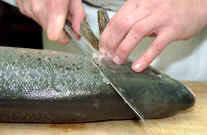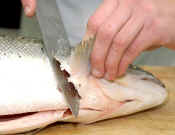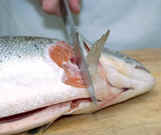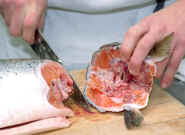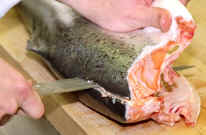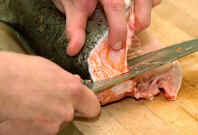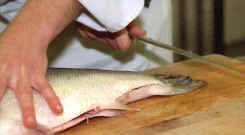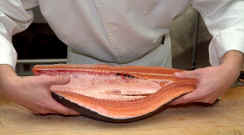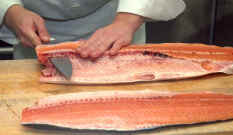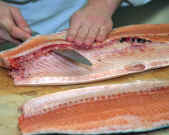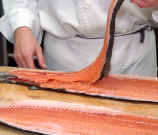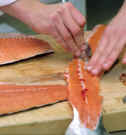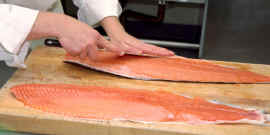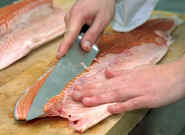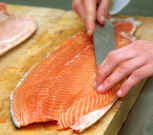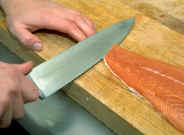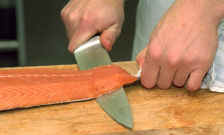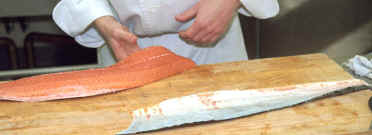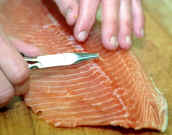|
|
|
|
Begin by removing the salmon head. Using a sharp knife cut behind the pectoral fin and gill at a 45 degree angle toward the head until the knife touches the back bone. Turn the fish over and repeat the cut this time severing the back bone and removing the head. It is important that the angle be steep enough to remove as much meat from behind the head as possible. Place dressed fish flat on the cutting board. Place knife blade against backbone and cut along backbone from head end to tail on one side of fish, severing ribs and top piece from backbone. Lay top piece aside. Remove backbone from remaining side. With a spoon scrape the backbone reserving meat for salmon mousse. With the knife, trim away rib and fin bones from both salmon sides. If needed trim all the grayish fat from the skin side of the fillet as it may cause a strong or slight bitterness. Any cartilage along the inside of the fillet next to the backbone should be removed. To skin fillets, place skin side down on cutting surface. Hold tail end tightly. With sharp knife, cut down through the flesh to skin. Flatten knife against skin and cut flesh away by sliding it toward head end while holding tail end of skin firmly Carefully pullout all the pin bones and check to make sure all have been removed by running your hand along the fillet from the head to the tail. Salmon may be used for poaching, broiling, sautéing, pan smoking, or baking |
|
|
|
|

